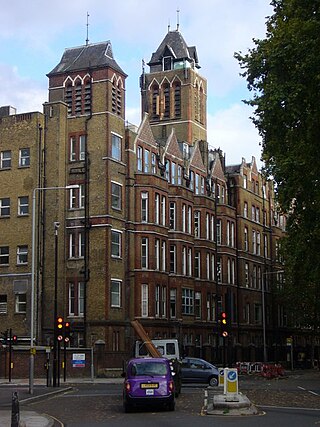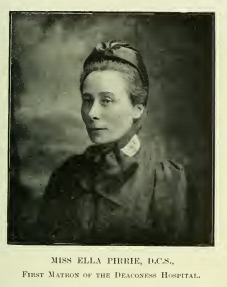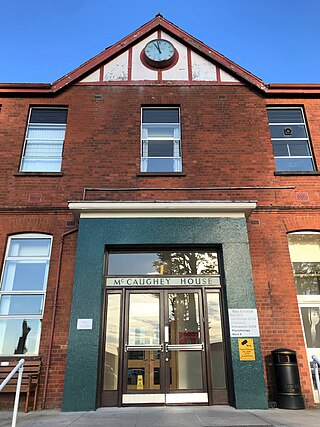
St James's University Hospital is a tertiary hospital in Leeds, West Yorkshire, England and is popularly known as Jimmy's. It is the 8th largest hospital by beds in the United Kingdom, popularised for its television coverage from 1987 to 1996. It is managed by the Leeds Teaching Hospitals NHS Trust.

Whipps Cross University Hospital is a large university hospital in the locality of Whipps Cross in Leytonstone and is within Epping Forest in the London Borough of Waltham Forest, London, England. It is managed by Barts Health NHS Trust.

The Royal Victoria Hospital commonly known as "the Royal", the "RVH" or "the Royal Belfast", is a hospital in Belfast, Northern Ireland. It is managed by the Belfast Health and Social Care Trust. The hospital has a Regional Virus Centre, which is one of the four laboratories in the United Kingdom on the World Health Organization (WHO) list of laboratories able to perform PCR for rapid diagnosis of influenza A (H1N1) virus infection in humans.

North Manchester General Hospital (NMGH) is a large NHS hospital in Crumpsall, North Manchester, England. It is operated by Manchester University NHS Foundation Trust. There is an accident and emergency unit, together with a maternity unit, high dependency unit and a mental health wing. A plan to rebuild the hospital was announced by Boris Johnson in the 2019 General Election campaign, and in November 2020 a £54 million funding bid for improvement works was made by the Trust, Manchester City Council, and Manchester Health and Care Commissioning.

The Mater Infirmorum Hospital, commonly known as The Mater, is an acute hospital in Belfast, Northern Ireland. It provides services to most of North Belfast and South Antrim, reaching as far as Glengormley, Carrickfergus and Newtownabbey It is managed by the Belfast Health and Social Care Trust.

Daisy Hill Hospital is an acute teaching hospital located in Newry, County Armagh, Northern Ireland.

Leicester General Hospital (LGH) is a National Health Service hospital located in the suburb of Evington, about three miles east of Leicester City Centre, and is a part of University Hospitals of Leicester NHS Trust. It has approximately 430 beds. The hospital is the largest employer in the area.

The Ulster Hospital, commonly known as the Ulster, is a teaching hospital in Dundonald in County Down, Northern Ireland. It is within the townland of Ballyregan, beside the A20 road. It provides acute services in the North Down, Ards and Castlereagh council areas, as well as east Belfast. It is managed by the South Eastern Health and Social Care Trust.

Agnes Elizabeth Jones of Fahan, County Donegal, Ireland became the first trained Nursing Superintendent of Liverpool Workhouse Infirmary. She gave all her time and energy to her patients and died at the age of 35 from typhus fever. Florence Nightingale said of Agnes Elizabeth Jones, ‘She overworked as others underwork. I looked upon hers as one of the most valuable lives in England.’

The Royal Belfast Hospital for Sick Children is a specialised government children's hospital and medical centre in Belfast, Northern Ireland. It is managed by the Belfast Health and Social Care Trust and is the only hospital in Northern Ireland dedicated to children.

St Pancras Hospital is part of the Camden and Islington NHS Foundation Trust in St Pancras area of Central London, near Camden Town. The hospital specialises in geriatric and psychiatric medicine.
The Lagan Valley Hospital is a hospital in Lisburn, County Antrim, Northern Ireland. It provides services to people from Greater Lisburn, the Lisburn City Council area and other parts of South East Ulster. It is managed by the South Eastern Health and Social Care Trust.

Kingston Hospital is an acute hospital in Kingston upon Thames, England. It is managed by the Kingston and Richmond NHS Foundation Trust. It has an Accident & Emergency Unit, a popular midwife-led Maternity unit, and an STD clinic known as the Wolverton Centre.

Isabella Barbour Pirrie, DCS (1857–1929), was the first nurse in the Belfast Union Workhouse Infirmary, establishing a nursing school there. She went on to become the first matron at the Deaconess Hospital, Edinburgh, established by Archibald Charteris as a training school for nurses.

Dulwich Community Hospital was a hospital located in Dulwich, in South London.

Whiteabbey Hospital is a hospital located close to the village of Whiteabbey, within the town of Newtownabbey, Northern Ireland. The hospital first opened in 1907 as The Abbey Sanitorium, centred around a country house known as 'The Abbey'. The house has stood on the site from 1850, and was once the residence of prominent architect Charles Lanyon. The hospital was extended and several buildings added throughout the early 20th century, and it was renamed Whiteabbey Hospital in 1947. The hospital is managed by the Northern Health and Social Care Trust. Many healthcare services have been withdrawn from the hospital, most recently with the closure of the Minor Injuries Unit in 2014.

Holywell Hospital is a facility that provides a range of mental health services in the Northern Health and Social Care Trust. Based on a 140-acre site in Antrim, the 149-bed facility is managed by the Northern Health and Social Care Trust.
The South Eastern Health and Social Care Trust (SEHSCT) is a health organisation in Northern Ireland. Hospitals served by the Trust include Downe Hospital, Lagan Valley Hospital and Ulster Hospital. It has 14,000 employees and 800 patient beds. It has created a comprehensive electronic record system and uses a fleet of mobile medical carts supplied by Ergotron which are said to have improved the quality of nurses’ daily ward rounds.
Mid-Ulster Hospital is an acute general hospital in Magherafelt, County Londonderry, Northern Ireland. It is managed by the Northern Health and Social Care Trust.

Belfast Union Workhouse was a workhouse operated by Belfast Poor Law Union to provide statutory relief to the destitute in Belfast and the surrounding townlands allocated to it. The workhouse operated from 1841 to 1948, overseen by a Board of Guardians.


















